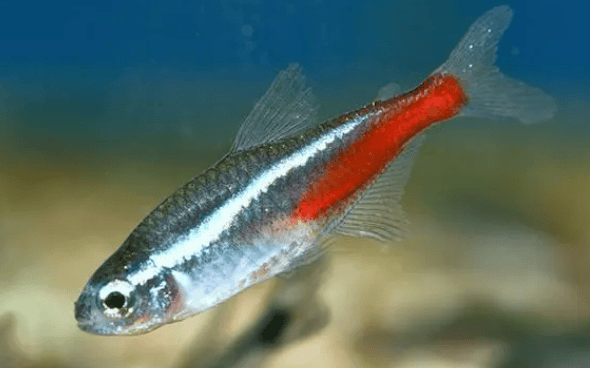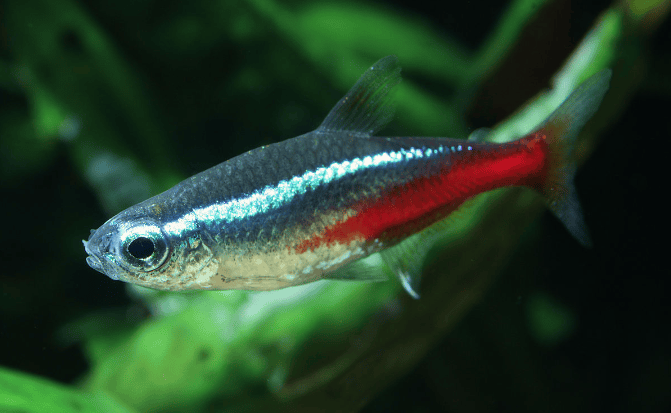The age of sexual maturity of broodstock is 10 months. It is more difficult to distinguish between males and females. Generally, male fish have slender bodies; female fish have thicker bodies. Cover the bottom of a 30cmX25cmX25cm fish tank with hair grass. The water temperature should be 5 to 26 degrees, and the water pH should be 5.6 to 6.5. The regulator should be adjusted slowly to allow the broodstock to adapt (or use double-distilled water with extremely soft water quality to adjust the pH and oxygenate for later use). Put a pair of broodstock fish in in the evening. The female usually hatches larvae at dawn the next day, and the larvae swim for food 4 to 5 days later. Females hatch 200 to 300 eggs each time.

It is difficult to reproduce in traffic lights, mainly due to the high requirements for breeding water quality and the special care requirements for the larvae. The breeding water needs to be extremely soft distilled water, and then use sodium dihydrogen phosphate to adjust the pH of the water to 5.6 to 6.5, then use a larger air pump to inflate it for 2 to 3 days, and then pour it into a large-mouth glass bottle for later use. Spread a layer of nylon mesh on the bottom of a large-mouth glass bottle (diameter 90 mm, height 180 mm, depth 130 mm) (the mesh size should not allow broodstock to pass through), then spread a little hair grass on the mesh, and put it in each bottle A pair of broodfish. In order to increase production, 50 to 100 glass bottles are usually needed in the incubation room.
In the evening, put pairs of broodstock fish into glass bottles and cover them with paper to create a dimly lit environment. Generally, egg laying begins on the next day and is observed once around 10 a.m. All broodstock that have laid eggs should be fished out immediately. Broodstock that have not yet spawned can continue to stay in the bottle. For example, on the third or fourth day, bottles that have not spawned yet should also be fished out. During the spawning period, the broodstock should stop eating to avoid deteriorating the water quality. The bottles that have laid eggs should be concentrated in one corner, and a manual egg picking process will be carried out between 9 and 10 o'clock in the evening. All unfertilized white eggs in the bottle will be sucked out with a straw. The fertilized eggs will be concentrated in a 30cmX25cmX25cm fish tank for hatching. The water used in the hatching tank is to pour the clearer water in the upper layer of the spawning bottle together. Since the breeding water of the traffic light is slightly acidic and highly soft water, old water must be used as the hatching water and cannot be replaced by new water. There are 400 to 500 eggs concentrated in each tank, and the larvae hatch out in 48 hours. The water temperature is always kept at 25 degrees. It is best to use paper stickers around the tank to prevent the larvae from being deformed due to too much light.

Because the larvae are small and swim less, they can only eat when the bait reaches their mouths. To open the bait, sift the egg yolk gray water with a 200 mesh net, then feed it drop by drop with a straw. After a period of time, when the larvae swim normally, feed the egg yolk gray water filtered with a 150 mesh net. . Because the larvae grow slowly, they take longer to feed on egg yolk gray water than other small species. In addition, the water quality of the hatching water for the larvae is extremely soft, and the water temperature is completely different from the daily rearing water temperature. When the larvae grow to 5 mm, place some of the daily water in a 50cmX40cmX40cm aquarium with the same water temperature. Put the larvae and water together in the aquarium so that the larvae can slowly adapt to the water quality of daily water. At this time, the larvae can be fed small fish and insects, and 1 to 2 tablets of oxytetracycline can be dissolved in the water to prevent bacterial infection. When the surface of the larvae has a red-green color, they can then be transferred to a large aquarium with a length of 80cm or 100cm. Keep them in tanks until they grow into adult fish.

 扫一扫微信交流
扫一扫微信交流
发布评论